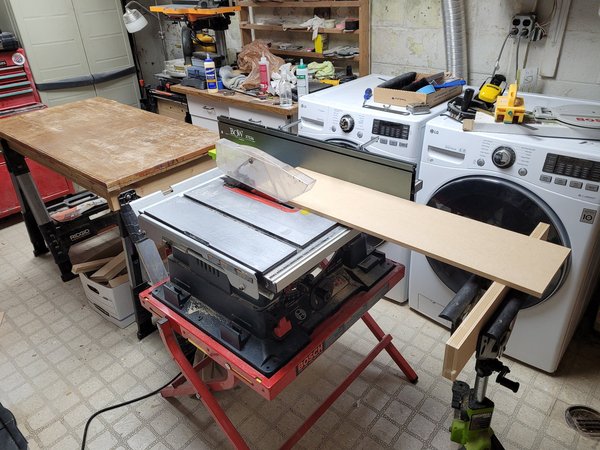|
Brombo,
Thanks for the offer to use your shop, though I doubt I will be undertaking a speaker project anytime soon. I do have a Bosch portable table saw that I recently rebuilt the motor on, used an extended fence, infeed support and flat outfeed for a few cuts on some rips that I used, but found that the Makita plunge track saw was much easier to manage because the work was stationary, and the TSC parallel guide system ensured precision and repeatability. With a shop vac hose attachment on the saw, there was virtually no dust. Of course I cannot say that about routing...that was a big mess and took alot of time. I needed to take some of that outside, the dust was so bad. I have a Jasper circle template, a 1/4" solid carbide straight bit, and took cuts 1/16" depth per pass to avoid any tearout issues. So did just fine with the tools I had, planning in advance for each operation to ensure no mistakes. I think it is important to know one's tools, what they can do, and adjust to their limitations. Where there is a chance that that something could go awry, rethink how to do it, test it first, and then proceed with care and confidence.
I know Woodwookers Club (Woodcraft), I was back and forth a few times over the course of this project, picking up tools, clamps, and the BB plywood for the interior of the cabinets.
Regarding digital crossovers and DSP, this may work fine if your source is digital, but when you also have a commitment to high performance analog as I do, using an ADC in the loop is a step backwards in sound quality. I do not want to comprimize here. I experimented with this using a handful of different ADC units, up to 192/24 resolution, but although the result was fairly satisfactorily, it still did not have the same magical quality of an all analog reproduction path. So keeping everything in the analog domain (past the DAC) was the only way for me, and I think, many others who are committed to analog. Similarly, I have little interest in pursuing Class D amplification, I enjoy designing and building tube amplification, and building (not designing) Class A solid state amps. So perfectly happy with keeping with "old school" solutions.
Now, if all I used were digital sources, I would rethink this. I have to admit, at the last CAF, I really liked the ADC active monitors I heard and could easily live with them.
David
David
| Attachments: |

20240708_121908-sm.jpg [ 713.35 KiB | Viewed 264 times ]
|
|



